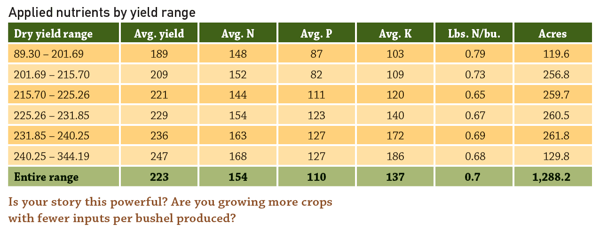I spend some of my best work days with growers – encouraging them to use their data to drive better agronomic decisions. Of course, I’m frequently also inviting them to become customers.
Tight economics for most corn and soybean growers has made selling anything more challenging. As tempting as it might be, I never suggest that data-driven decisions will lead to spending less on inputs. In fact, I believe the promise of spending less has hurt “precisions ag” adoption. Variable-rate lime applications might be the lone exception.
Rather than promote the input-savings message, for me, it’s all about investing more wisely within each field and across your operation. Everything you save in one part of a field will likely be spent in another. Every seed saved in the worst part of the farm will be invested in the best part.
The first step in using your data to drive efficiency requires a change in thinking. It requires that you stop pretending all fields are the same. Technology allows us to measure the differences that exist. And variable-rate technology allows us to treat each part of each field differently.
Is it working? Are precision ag tools really allowing us to be more efficient? Is the concept of producing more with less real?

Paul Fixen, senior vice president of the International Plant Nutrition Institute, recently summarized some encouraging evidence, and the answer is “yes.” Fixen writes that in the U.S. in the past 35 years, we have raised corn yields by 70 bushels per acres (70% increase). During the same time period, average nitrogen rates have only increased 6 pounds per acre (5% increase). This is a success story that needs to be told over and over again!
Fixen also cites precision ag’s role in increasing soil testing and notes that “nutrient use has never been as measurement-guided as it is today.”
Premier Crop has many customers who focus on using all their layers of data to drive efficiency in all their corn and soybean production. The table above is an example of data from a grower’s first-year corn acres where the grower split-applied his N and focused on stretching every pound of N while maintaining high yields.
Results like these don’t happen by accident. Achieving higher yields while dramatically lowering pounds of applied N per bushel produced requires using variable-rate technology to execute an integrated and complex agronomy plan each year.
Remember the old days of 1.2 pounds of N per bushel of yield less credits for legumes? Those days are long gone for many of the best operations. We need to tell our story to others – family, friends, urban neighbors, legislators and public policy makers.
Learn more about crop management.
